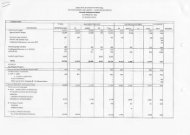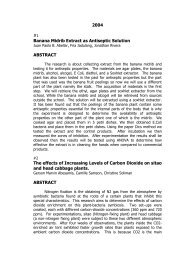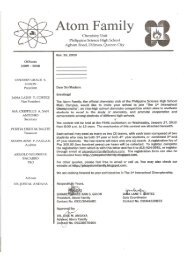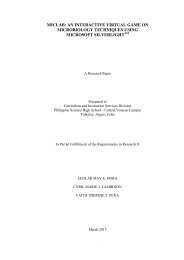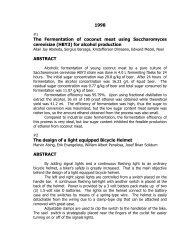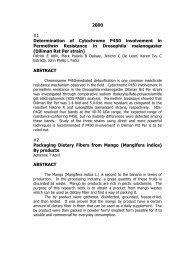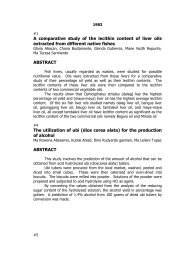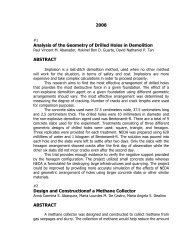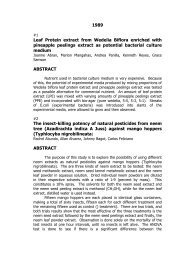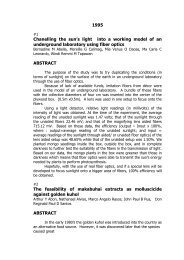A comparative study of paper produced from zea mays - Philippine ...
A comparative study of paper produced from zea mays - Philippine ...
A comparative study of paper produced from zea mays - Philippine ...
Create successful ePaper yourself
Turn your PDF publications into a flip-book with our unique Google optimized e-Paper software.
#12<br />
Proximate analysis <strong>of</strong> pleurotus ostreatus (Abalone<br />
mushroom)<br />
John Thomas A Aquino, Salvador T Bernardo Jr, Romig J Celis, Eric Manuel N<br />
Pareja, Warren David A Sarmiento<br />
ABSTRACT<br />
This experiment was designed in order to determine the actual<br />
nutritive value <strong>of</strong> the Pleurotus ostreatus more commonly referred to as the<br />
abalone mushroom.<br />
Our experiment required four separate samples <strong>of</strong> the Abalone<br />
mushroom – one air-dried and three oven-dried samples. These samples<br />
were made to undergo specific tests and preparations for the determination<br />
<strong>of</strong> the following: To ash, to moisture, to rude fiber, % protein, % fat. The<br />
Abalone mushroom was found to cantain89.5% moisture, 2.91% protein,<br />
0.49% ash, 0.16 crude fat, 1.17% crude fiber and 5.72% carbohydrates. It is<br />
preferable to store the mushrooms in their dry form. The experiment also<br />
sought to determine in what form the Abalone mushroom could best be<br />
appreciated. Two <strong>of</strong> the suggested forms were: as a meat extender; and as<br />
bouillon cubes for soup. Unfortunately, however, due to our slow pace and<br />
lack <strong>of</strong> time, not all possible forms were explored.<br />
#13<br />
A <strong>study</strong> on the capability <strong>of</strong> Bacillus polymyxa and<br />
azespirillum lip<strong>of</strong>erum I protecting tomato plants <strong>from</strong><br />
wilt disease<br />
Anna Melissa Aspiras, Delia Bobadilla, Gladys Cherisse Completo, Annete<br />
Domingo, Ma Alexandra Pura<br />
ABSTRACT<br />
Pseudomonas solanacearum is a serious disease causing agent <strong>of</strong><br />
solanaceous plants such as tomato, pepper, tobacco, and Irish potato. The<br />
beneficial bacteria, Bacillus polymyxa and Azespirillium lip<strong>of</strong>erum, are both<br />
nitrogen fixers. These bacteria were used to demonstrate the idea that by<br />
pre-emptive colonization, the beneficial bacteria can prevent the entry <strong>of</strong><br />
harmful bacteria into some plants. Therefore, it is a mechanism <strong>of</strong> discrete<br />
preventions.<br />
In the treatment with the bacteria B polymyxa and P solanacearum,<br />
0%, 8.7%, and 40% were the casualties or the percentage <strong>of</strong> its mortality<br />
rate in the three trials. In the treatments with the bacteria A lip<strong>of</strong>erum and P<br />
solanacearum, 0%, 1.4%, and 10% were the casualties, also, in the three<br />
trials. While, in the treatment with P solanacearum alone, 6.7% 35%, and<br />
70% <strong>of</strong> the original populations died because <strong>of</strong> the wilt disease.



